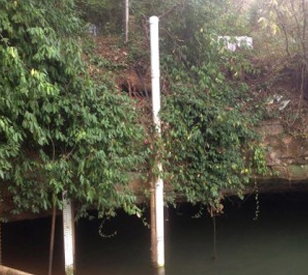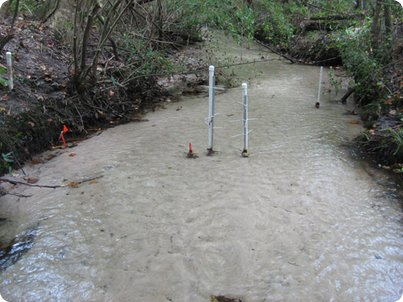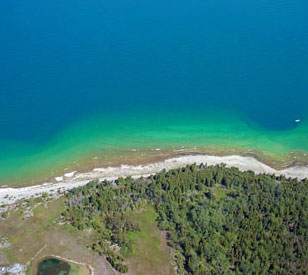Groundwater Monitoring

Groundwater contamination is a serious issue that can affect irrigation, drinking water sources, and municipal water supplies. Changes in groundwater levels can also limit available supplies or cause unstable ground conditions. Well monitoring efforts can detect contaminants and changes in groundwater in real-time, giving water managers and response personnel time to take action.
Groundwater

Typical Groundwater Monitoring System
Groundwater monitoring systems can help map the spread of contaminants, track remediation efforts and monitor groundwater levels and quality. Systems often consist of a network of sensors installed throughout a site or watershed.
The X3 environmental data logger is the central component of NexSens groundwater monitoring systems. It is compatible with a wide range of sensor types and manufacturers and can transmit real-time data to the WQData LIVE web datacenter via radio, cellular, or satellite telemetry. WQData LIVE has a suite of data management tools and alerts to changing conditions via email or SMS text message.
Tipping bucket rain gauges are commonly integrated for precipitation measurement, while the Stevens HydraProbe is a popular sensor for its suite of soil temperature, moisture and conductivity measurements. Advanced systems can even incorporate water flow sensors to quantify reduction of stormwater runoff.
Flexible mounting options for the X3 simplify installation in the field, and power supplied with SP-series solar power packs allows for continuous operation. Waterproof UW connectors and automatic sensor detection streamline system start-up.
Sensors typically integrated into NexSens groundwater monitoring systems include pressure transducers like the Seametrics PT12 for level measurements and water quality sensors for conductivity and other measurements. Weather sensors such as tipping bucket rain gauges may also be incorporated to develop a correlation between precipitation and groundwater levels. A wide range of industry-standard sensors associated with groundwater monitoring are supported by the X3 logging platform.
Contact a NexSens Applications Engineer today to discuss your groundwater monitoring application.

Case Studies
Karst System Groundwater Monitoring
Because of its location in a karst region that is marked by the presence of sinkholes, springs, caves and underground streams, the city of Bowling Green, Kentucky, faces challenges when it comes to managing its stormwater resources. In response to those challenges and to help make managing the resources easier, scientists at Western Kentucky University, in partnership with and financial support from the City of Bowling Green, outfitted a section of the Lost River Rise with water quality and groundwater monitoring equipment in 2014. Since the Lost River Rise is the primary output for one of the large karst groundwater systems running beneath Bowling Green, it is an important location to study both for those who rely on its water and scientists interested in how it responds to heavy storm events.
Read More →Stream and Groundwater Interactions – UNC Wilmington
Temperature data can be used for the qualitative and quantitative assessment of groundwater-surface water interactions. Surface water bodies, such as streams, often undergo diel variations in temperature, whereas deeper groundwater may maintain a relatively constant temperature. In the shallow hyporheic zone, where ground and surface waters mix, temperature profiles can provide insight regarding the direction of groundwater flow. For example, in a down-welling stream reach (one in which water flows from the stream into the hyporheic zone), the temperature behavior in the shallow subsurface may show the diel temperature variation caused by the downward moving surface water.
Read MoreLake Huron Sinkhole Research
Along the seafloor of Lake Huron, there are several karst sinkhole formations through which groundwater enters the lake bottom and carries with it remnants of an ancient sea. A team from the National Oceanic and Atmospheric Administration’s Thunder Bay National Marine Sanctuary and Institute for Exploration first discovered evidence of the sinkholes by accident in 2001 while studying shipwrecks located offshore from Alpena, Mich. Upon measuring unusual levels of conductivity, the team called in Bopi Biddanda from the Annis Water Resources Institute at Grand Valley State University and Steve Ruberg from NOAA’s Great Lakes Environmental Research Laboratory, who both discovered the sinkholes.
Read More






